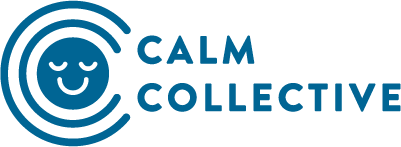How to Do a Dopamine "Detox"
Dopamine detox: fad or fact?
Run a Google search for “dopamine detox” and you’ll be instantly bombarded with articles and YouTube videos on how to do it, and the benefits of it. Dig a little deeper, however, and you’ll find that there are also many questions on its legitimacy, and whether or not it actually has any basis in science.
Generally, you’ll hear of people cutting out technology or social media use, which is commonly understood to be addictive and unhealthy when used too frequently. The basic idea of a dopamine detox, according to the trend, is taking a break from these dopamine triggers for a set amount of time, whether for a few days to weeks, and focusing on slower, more mindful activities to “reset” the amount of dopamine in one’s brain.
It might sound convincing enough, but is that the whole truth to it?
What dopamine detox is not…
It’s not a detox in the literal sense, meaning it won’t get rid of dopamine, a naturally-occurring substance that your brain continually produces. The idea of a detox is therefore misleading, since you can’t remove dopamine. In fact, dopamine is necessary for a functional brain — too little of it, and it might cause certain illnesses and disorders.
Some also go the extra mile when it comes to detoxing, and refrain from socialising, exercise, and even reading. However, this is certainly not realistic to many of us, and might even be harmful: we are social creatures, after all.
… And what a true “dopamine detox” might be
According to Cameron Sepah, the psychiatrist whose works first popularised the idea, “individuals should specifically target behaviours that cause distress, impairment to daily work or life performance, or addictiveness”. Some examples of problematic habits might fall under the following categories:
Pleasure or emotional eating
Internet or gaming
Gambling or shopping
Porn or masturbation
Thrill or novelty-seeking behaviours
Use of recreational drugs
Sepah’s theory is that we should take control of our behaviours and be more aware of when we keep returning to unhealthy stimuli in our lives. The behaviours listed above provide instant gratification and can be problematic when they start ruling our lives. By resisting these compulsions, Sepah argues, we are able to lead more fulfilling lives and achieve healthier long-term goals.
So, how does one do a “dopamine detox”?
Sepah’s idea of a “dopamine detox” takes its inspiration from cognitive behavioural therapy, or CBT, and is extremely simple at its core: we should refrain from doing activities which are harmful to us, and replace them with more beneficial ones.
To most of us, this might mean taking a social media break, and focusing on other hobbies such as exercising and reading. In this case, the phrase “dopamine detox” is just a fancier, punchier way of saying “reducing screen time”.
Because many of us resort to scrolling on our phones when we’re free, by reducing screen time we should technically be able to turn to other more productive activities that make us feel fulfilled in the long run. While social media isn’t inherently bad, the general consensus is that too much of it may impact our mental health, as noted by Bisma Anwar for Talkspace.com. According to her, the negative effects of spending too much time online can range from poor self-esteem to even depression and anxiety.
Another tip for quitting bad habits is to go slow, and not to cut it out cold turkey. That way, we have time to get used to the changes and have a better chance at succeeding.
So, the trend of “dopamine detoxing” seems to be the idea of CBT all dolled up in a fancy dress. While the phrase itself is technically misleading and scientifically inaccurate, it’s nevertheless always a good idea to get rid of our bad habits — whether that is scrolling too much on our phones or even smoking — and to replace them with healthier, more beneficial ones.
